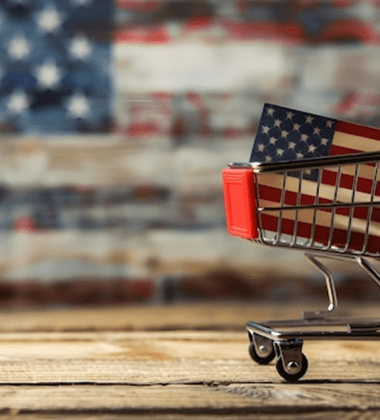The modern buyer is no longer just shopping for a product—they’re shopping for values. As we move deeper into 2025, conscious consumerism has shifted from a trend to a movement, one that is actively reshaping industries, especially the food and beverage sector.
With major industry events like The Global Products Expo on the horizon—taking place June 26–28, 2025, at the New Jersey Expo Center—brands are taking note. If you plan to exhibit or attend the food and beverage expo USA, understanding what motivates today’s conscious consumers will be crucial to your success.
What Is Conscious Consumerism?
Conscious consumerism refers to a purchasing mindset where individuals make buying decisions based on how products impact:
- The environment
- Worker rights and labor practices
- Animal welfare
- Community empowerment
- Corporate transparency
Buyers are aligning their dollars with their values, and companies that ignore this shift are already losing relevance.
Why Brands Can’t Afford to Ignore Conscious Consumption
According to a 2024 NielsenIQ study:
- 76% of U.S. consumers say a brand’s environmental practices influence their purchases.
- 64% of Gen Z prefer brands that speak up about social justice and sustainability.
- 58% of all buyers are willing to pay more for ethically sourced or sustainable products.
These numbers aren’t theoretical—they’re already shaping booth traffic, product choices, and social media traction at expos across the U.S., especially at mission-forward shows like the Global Products Expo.
What Matters Most to the Conscious Buyer?
Let’s break down the key drivers behind conscious consumer decisions, especially in the food and beverage category:
1. Sustainability
From eco-friendly packaging to reduced food waste, buyers are looking for brands that take measurable action on sustainability. Plant-based ingredients, upcycled food products, and carbon-labeling practices stand out on the expo floor.
2. Ethical Sourcing and Labor
Conscious consumers are asking:
- Who made this?
- Were they treated fairly?
- Was the supply chain transparent?
They gravitate toward brands that provide supply chain visibility, partner with fair-trade certified vendors, or support local farming initiatives.
3. Clean Label Ingredients
No more cryptic labels. Today’s buyer wants transparency:
- Organic
- Non-GMO
- No artificial preservatives or dyes
Many expect full food certification labels that align with personal values, from halal and kosher to vegan and gluten-free.
4. Diversity, Equity, and Inclusion (DEI)
Shoppers are increasingly drawn to BIPOC-owned, women-led, and LGBTQ+ inclusive brands. Telling your DEI story—visibly and authentically—can build brand loyalty on and off the trade show floor.
Conscious Consumerism at the Food and Beverage Expo USA
At events like The Global Products Expo, these shifts are visible in real-time:
- Attendees seek out sustainable swag and eco-friendly booths
- Vendors highlight ethical sourcing stories in packaging and signage
- Digital product demos replace single-use samples
- Sessions on brand transparency and circular economy practices draw standing-room-only crowds
The expo is becoming more than a showcase—it’s a statement of values.
How to Appeal to the Conscious Consumer
Here’s how your brand can thrive in this evolving space:
1. Lead With Your Values
Your booth signage, product messaging, and staff talking points should clearly communicate your brand’s stance on sustainability, ethics, and transparency. Use storytelling and visuals to connect emotionally.
2. Show Proof, Not Promises
Use third-party certifications, QR codes linking to sourcing information, or on-site videos showcasing impact. Modern consumers can spot greenwashing from a mile away.
3. Highlight Community Impact
Do you give back? Hire locally? Support marginalized groups? Showcase that. People aren’t just buying products—they’re investing in the future they believe in.
4. Involve the Consumer
Offer digital polls, sustainability pledges, or sampling stations where attendees can vote on the next flavor or design. Interactive trade show ideas like these engage and validate conscious shoppers.
What’s Next for Conscious Consumerism?
As AI, automation, and global logistics become more prominent, so too will the demand for human-centric brands. Consumers will expect ethical decision-making embedded into every aspect of your product lifecycle—from ingredients to shelf display.
Events like The Global Products Expo offer the perfect stage to prove your commitment and connect with values-aligned buyers who aren’t just browsing—they’re building a better world through their purchases.
Final Thoughts
Conscious consumerism isn’t a niche anymore—it’s a powerful shift in the global marketplace. Whether you’re an emerging brand or a heritage company, the key to long-term growth lies in trust, transparency, and purpose-driven innovation.
As you prepare for the food and beverage expo USA, ask yourself: Are we offering more than just a product? Because for today’s conscious buyers, that answer might determine whether they stop, sample—or walk away.





